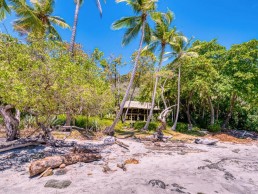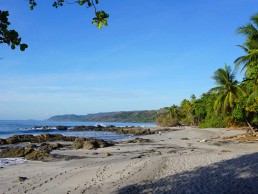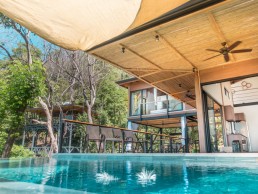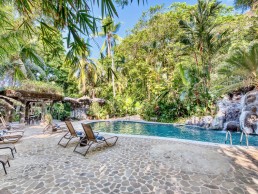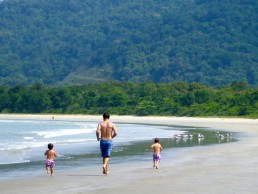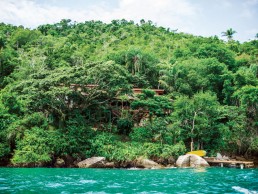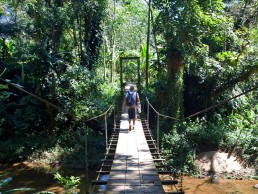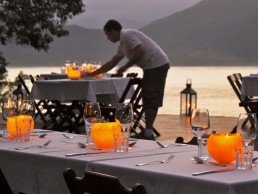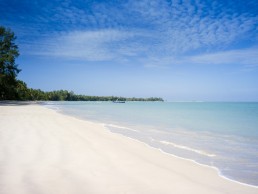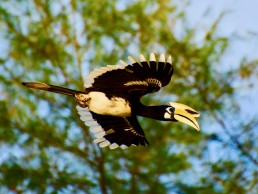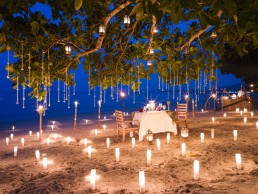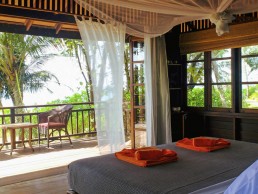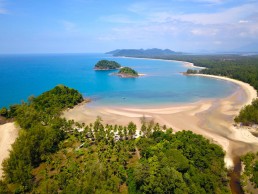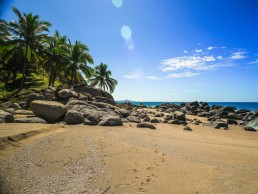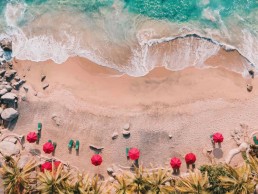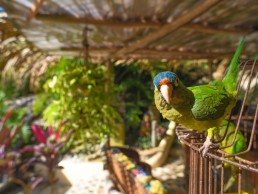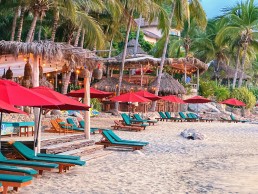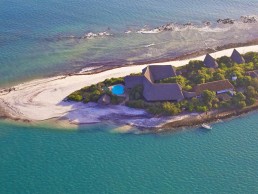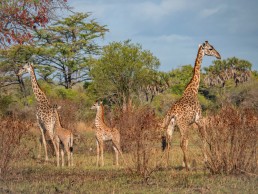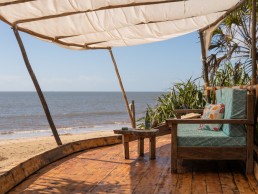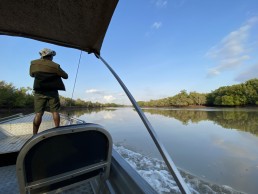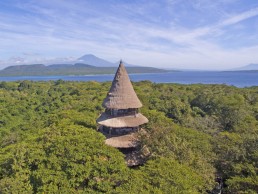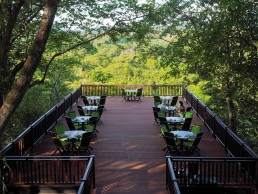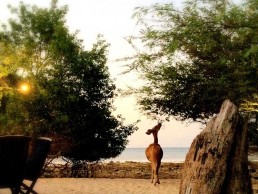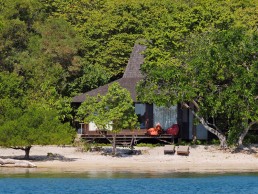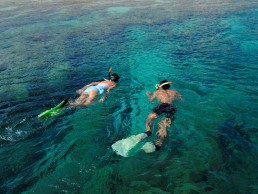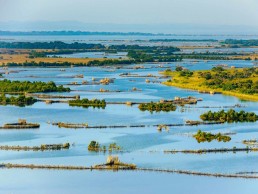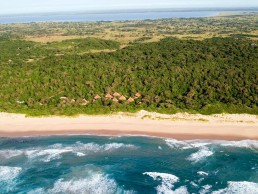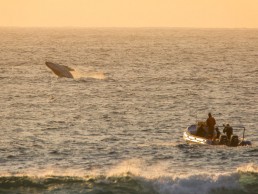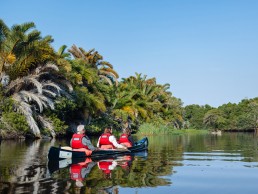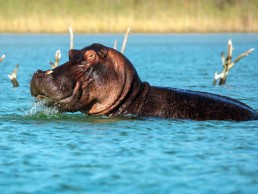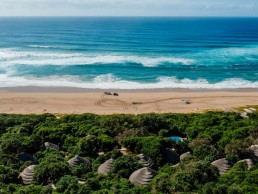
By Lucy Richardson, Editor
Jungle, meet beach. These pristine environments are some of the planet’s most wild and beautiful places. And they’re conservation hotspots too, with tourism managed responsibly, and national park entrance fees going towards protecting the spectacular biodiversity, so you can see paradise while preserving it. That’s travel done right.
Cabo Blanco Nature Reserve – Costa Rica
The lowdown: Costa Rica is all about beach and jungle adventures. On the Pacific Coast, at the southern tip of the Nicoya Peninsula, lies Cabo Blanco Nature Reserve, the country’s oldest national park. Visitor numbers are capped each day, so you’ll pretty much have the run of the place – alongside monkeys, coatis and other exotic wild creatures. Two hikes weave through the forest to the hidden white sands of Cabo Blanco beach: the Sueco Trail (4.2km), and the shorter Danes Trail (1.5km). When you arrive, look up to see brown pelicans nesting in the trees, or dive down to see the tropical marine life protected by the reserve.
While you’re here: Take the boat from Montezuma to Tortuga Island, where snorkelling is out of this world. Dolphins and turtles glide alongside the boats, and whales are occasionally sighted.
Where to stay near Cabo Blanco:
- Ylang Ylang, a relaxed little paradise near bohemian Montezuma, with jungle bungalows that are great value
- The plush Santa Teresa Luxury Villas, fringed by vibrant jungle on one side and pristine surf beaches on the other
Costa Verde – Brazil
The lowdown: There’s no need to journey inland to the Amazon for your fill of jungle in Brazil – the vast Atlantic Forest runs right down the spine of the country’s coastline, spilling onto empty wild beaches. The Costa Verde stretches south from Rio, north from Sao Paolo, and past the delightful town of Paraty. See waterfalls plummeting into natural pools, walk through thick forest to local communities in the hills, or head out to one of the 65 tropical islands off the coast – one of which has a population of endangered golden lion tamarin monkeys (take bananas!).
While you’re here: Catch the boat to UNESCO-listed Paraty, where cobbled streets are lined with coloured houses, time-worn churches, art galleries, artisan shops and quirky cafes with street artists.
Where to stay on the Costa Verde:
- Casa Cairucu, a stylish beach house (sleeps 2-8), where the bioluminescence makes night-time dips feel like swimming in a sea of stars
- Pousada Picinguaba, a beach and jungle retreat with 10 rooms built in perfect harmony with their natural surroundings
Phang Nga – Thailand
The lowdown: Most travellers visiting southern Thailand flock to Phuket, so few find blissfully unspoilt Phang Nga, located just to the north. National parks pepper the landscape: Khao Lak has waterfalls and Sunda flying lemurs, while Sri Phang Nga has moist evergreen forests and resplendent birdlife. And just off the glistening Andaman coast lie untouched tropical islands: day-trip to jungle-strewn Ko Ra, known for its impressive biodiversity (much of the island is a protected wildlife sanctuary).
While you’re here: Head inland to Khao Sok National Park, one of the oldest and most diverse rainforests on earth. Rafflesia, the world’s largest flower, is found here – it grows up to 90cm in width and emits a foul stench that’s said to resemble rotting flesh (yuck), so you won’t miss it!
Where to stay in Phang Nga:
- Baba Ecolodge, an affordable, back-to-nature hideaway on Koh Phra Thong, where beaches are deserted and there’s no civilisation in sight
- The Sarojin, a luxurious five-star resort in Khao Lak, set on 11km of private beach
Bay of Banderas – Mexico
The lowdown: Mexico’s Bay of Banderas hugs the Pacific Coast near Puerto Vallarta, at the foot of the Sierra Madre Mountains. This stretch of coastline has astonishing biodiversity. Dolphins, rays and turtles frequent the waters, and humpback whales come to nurse their calves. Up in the forested hills, wildlife crowds the jungle; jaguars, monkeys, armadillos and iguanas are some of the area’s main residents. The best way to see them? Zip-lining over the canopy, of course.
While you’re here: Out in the bay, the Marietas Islands are an uninhabited nature reserve and the only place outside the Galapagos where you’ll find blue-footed boobies.
Where to stay in the Bay of Banderas:
- Verana, a totally secluded boho-jungle retreat overlooking the bay. Bird walks, whale watching and paradise picnics on a deserted beach are popular activities
- Playa Escondida, a jungle hideaway with a private, west-facing beach (sunset heaven!), near the surfer town of Sayulita
Saadani National Park – Tanzania
The lowdown: Okay, so it’s not exactly a jungle, but how many places in the world can you spot the Big Five one minute and then plunge into the Indian Ocean the next? Made up of beach, bush and river, Saadani, on Tanzania’s East Coast, is the country’s only park with sea frontage. On the land, you get elephants, lions, buffalos, giraffes, antelopes – the whole safari shebang. Among the mangroves, hippos and crocs are common sightings. And in the sea, whales, dolphins, turtles and over 40 species of fish roam.
While you’re here: From Dar, hop on a plane, and in 20 minutes you’ll be in Zanzibar, where more jungle and beach adventures await!
Where to stay in Saadani National Park:
- Saadani Safari Lodge, which sits in the heart of the park on the deserted sands of a 50km beach
- Lazy Lagoon, located 100km south of Saadani on the southernmost tip of a 7-mile long peninsula, just off the mainland; ideal for barefoot indulgence
West Bali National Park – Indonesia
The lowdown: Bali’s quiet and far less touristy north coast is where the wild really starts. The island’s top corner is a green oasis of mountains, rainforest, mangroves, sea grass and reef, collectively known as the West Bali National Park (or Bali Barat). Over 100 species of wildlife live here, but best-known are the white Bali starlings, endemic to this little island. Your expert guide will show you monkeys playing on the beach, point out turtles coming up for air, and teach you to identify nearly 200 species of plant that populate the thick jungle.
While you’re here: Go snorkelling off Menjangan Island, which translates as deer island – a name that came about when locals observed herds of wild deer swimming here from the West Bali National Park.
Where to stay near West Bali National Park:
- The Menjangan, which sits within the national park and faces Menjangan Island, so you’re immersed among wildlife
- Puri Ganesha Villas, lying east along the coast and offering laid-back luxury in four large beachside villas – one of our all-time favourite places
Maputaland – South Africa
The lowdown: Maputaland is South Africa’s best-kept secret. Tucked away in the northern part of KwaZulu-Natal, stretching right up to the Mozambique border, this natural paradise is formed of low-growing forest and deserted sandy beaches. Canoe along creeks through the iSimangaliso Wetland Park, past crocodiles, water monitors, otters and hippos; see rare samango monkeys swinging in the coastal forests; or dive down to pristine reefs, home to over 1,000 species of fish as well as dolphins, whales and turtles.
While you’re here: Safari in Tembe Elephant Park, where the largest elephants on the planet roam. The rest of the Big Five are here too (lion, leopard, black and white rhino and buffalo).
Where to stay in Maputaland:
- Thonga Beach Lodge, where luxurious suites are ensconced among forested dunes and deserted sand – there are no other hotels within 60 miles
- Kosi Forest Lodge, hidden inland among sand forest at the edge of a lake, with wetlands extending all around
